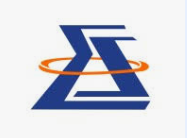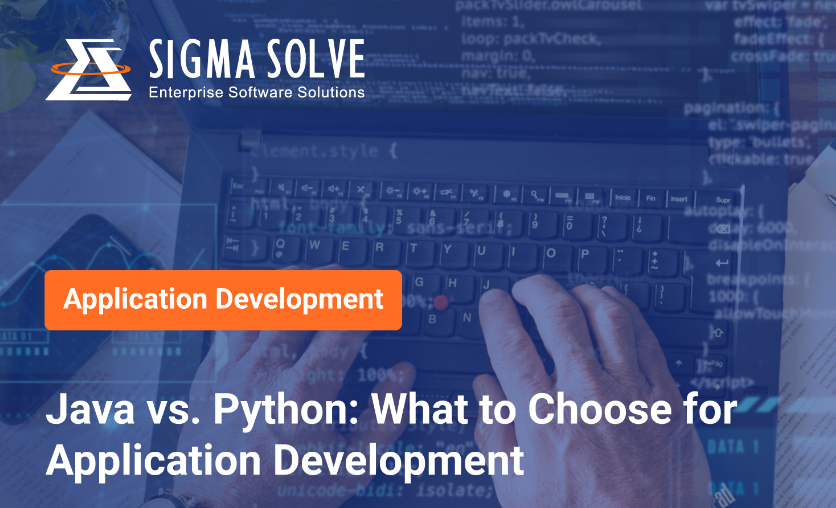Java vs. Python: What to Choose for App Development
 Sigma Solve
Sigma Solve
Synopsis
The old-age battle between Java and Python continues even today as we witness humongous changes in approaches to enterprise app development. The new age developers add fuel to that fire with their learning curve differentiating from one another.
This blog explains the convergence and divergence between Java application development and app development with Python. We also explain how an enterprise software solutions provider can leverage both for enterprise application development, depending on their project requirements.
Introduction: A Developer’s Dilemma
Whenever there are options, confusion prevails. The application development landscape is no different. Choosing the correct app development language becomes critical as the software development field leaves its historical shadows behind. The Java Army and Python Forces are constantly trying to improve each other.
Java and Python are programming languages with pros and cons, strengths and weaknesses. Selecting between them could be a tough job for any developer. Multiple factors can affect the selection of language for application development: performance, scalability, simplicity, client needs, and framework.
We will examine whether leveraging both languages in one application development process is a viable option and what impact it generates on the enterprise application itself.
Understanding Java: The Enterprise Powerhouse
The VP of Engineering, Alpesh Sarvaiya at Sigma Solve Inc. explained the significance of Java and said, “Java is the mother of many languages. Java nurtures a structured approach and demands clear declarations. Being a statistically typed language, Java safeguards types to optimize performance during compilation.”
Versatile and Independent:
Java is a compiled language with platform-independent and network-friendly characters. A WORA (Write Once, Run Anywhere) patron ensures Java codes run on any platform conveniently.
Structured & Secure:
Its object-oriented nature ensures Java enforces explicit and clear declarations to safeguard types during compilation for optimum performance.
Rich Ecosystem:
Java’s impeccable reputation is built on extensive libraries and frameworks that make Java application development a joy ride. It converts code into bytecode for secure execution on the Java Virtual Machine (JVM).
Mobile Powerhouse:
Java is a core component of mobile applications, especially for Android app development. Java offers much-needed reliability and adaptability.
Top Developer Choice:
Java’s long-standing presence in enterprise and mobile environments makes it a trusted favorite for programmers worldwide.
Demystifying Python: The King of Simplicity
Python is known as the “King of Simplicity” due to its comfort and convenience for enterprise Python application development. Be it data scientists, automation experts, or regular software developers, Python is a preferred programming language because it is interpreted, object-oriented, and dynamically typed. Python prioritizes readability, and it doesn’t require compilation before code implementation. Therefore, it is extensively used in data science and machine learning applications.
Rapid Prototyping:
Prototyping is vital in application development to reduce errors and costs. Python makes prototyping explicitly simple, enabling developers to iterate, test, and amend quickly with minimum coding.
Web Development:
Dynamic web application development becomes extremely easy with backend frameworks like Django and Flask, which offer secure, flexible, and scalable app development solutions.
Data Science & Machine Learning:
Innovation is at the core of enterprise software development. Python wins the race in this area with its library ecosystem and tools like TensorFlow, Numpy, and Pandas for developing data science and machine learning solutions.
Automation & Scripting:
Cross-platform applications are in demand, and Python makes developing web applications of these kinds straightforward with automation and scripting tasks. It streamlines repetitive tasks and automates the admin workflow.
Readability and Maintainability:
Python emphasizes clean syntax and readability. Therefore, it is the developers’ primary choice for long-term application development and collaborative projects, as it makes core sharing seamless among developers.
Making the Right Choice: A Project-Centric Approach
Despite learning all the pros and cons of Java and Python, developers have a tough time selecting one over the other for enterprise application development. The one-size-fits-all concept has led to tailored solutions. Various factors are vital when software developers select the programming language, as seen in the comparison table above.
Java or Python? The answer lies in the developer’s user-centric mindset. A software developer should determine the programming language based on the client’s objectives and feature requirements.
Key Factors to Consider:
Project Scale:
The scale, complexities and scope of enterprise app development must guide developers in determining the programming language. While Java is more suitable for mission-critical applications, Python may help develop prototypes and automate iterative tasks.
Performance Needs:
When a project requires heavy computational capabilities, Java application development is more suitable because of its performance optimization ability; however, if the developers are asked to do speedy development, the Python application development process should be adopted.
Development Team:
The development team plays a critical role in determining the app development language. With its simplicity and speed, Python has become the obvious choice for many programmers. However, if the team is familiar with Java and its ecosystem, it becomes an obvious choice for the developers.
Desired Functionalities:
Developers must first know what they are developing. The core functionalities help decide the programming language. Java can quickly develop enterprise software solutions and Android apps, while Python is suitable for developing AI and automation solutions, and web development.
Libraries and Ecosystems:
In-built development suites are crucial here. Compatible frameworks and libraries are essential to developing quality apps. Java’s ecosystem is mature for enterprise-level application development, while Python is the right choice for developing apps for scientific computing and data science.
Conclusion: It’s Not Always Black and White
Selecting a programming language can’t be decided on the chessboard; one player will select white, and another will select black. Given the complexities of present-day web and mobile apps, compelling AI integration makes it compulsory for developers to leverage both programming languages depending on the functionalities within the application.
Sigma Solve’s developers and engineering experts conduct rigorous reviews of the project, clients’ objectives, functionalities, practical usage, and scalability to determine the project timeline, team combination, and scalability. Businesses can easily hire Python developers as their dedicated resources from a vast and experienced talent pool at Sigma Solve.
Sigma Solve is a proven technology partner for your enterprise application development needs. Consult our IT experts to acquire new capabilities and set a progressive path toward building better applications. Call us at +1 954-397-0800 for consultations.
Source: https://www.sigmasolve.com/java-vs-python-what-to-choose-for-application-development/
Subscribe to my newsletter
Read articles from Sigma Solve directly inside your inbox. Subscribe to the newsletter, and don't miss out.
Written by

Sigma Solve
Sigma Solve
Recognized as a front-runner in AI and Digital Transformation, Sigma Solve, Inc. has secured its place on the 2023 Inc 5000 America’s Fastest Growing Companies at No. 2021, up from No. 2077 in 2022. For more than 15 years, the company has solidified its position as a trailblazer utilizing emerging technologies. Its accomplished team of 200+ engineers has successfully delivered more than 1000 projects and caters to over 150 clients with a >90% retention rate.